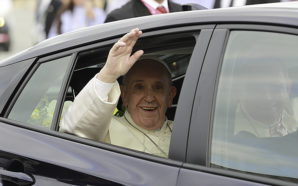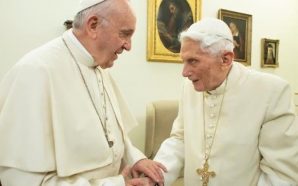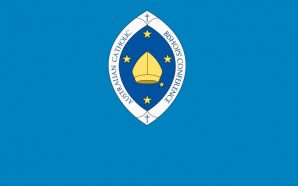The coronavirus pandemic that is slowly changing our lives here in Sydney is being felt in Rome. The Rector of Domus Australia, Monsignor John Boyle, has been in Rome for three years. Formally the Parish Priest of St Bernadette’s Parish, Castle Hill, he is now anxiously watching the situation in the Eternal City.
Below is an edited version of a letter he recently shared with the priests of the Diocese of Parramatta.
I am writing this from my desk in my bedroom in Rome. The weather outside is beautiful; that perfect Easter weather with clear blue skies and glorious sunshine pouring into my room. However, I cannot go outside. I am in lock-down, unable to go for my usual 6.00am walk.
According to The Local.it, the death toll in Italy is over 11,591. The situation seems to be improving. More than 800 people died from the virus in Italy on Monday (30 March). 4,050 cases were confirmed on Monday, compared to 5,217 on Sunday and 5,974 on Saturday. There have been 101,739 people infected with coronavirus in Italy. Six people in the Vatican has tested positive. More than 60 doctors have died from the virus and three days ago, we heard 74 priests and one bishop had gone to God as a result of the coronavirus. This is just one reason why I am staying indoors.
Life here is not too bad. Domus Australia and all hotels are closed. The big hotels on the Via Veneto have closed their main front doors. The schools are closed. There is hardly anyone on the streets. Busses are still running but most without passengers. There might be one or two masked passengers hunched in the back seats. The doors at the front of the bus are permanently closed to protect the driver who is also masked. Even the pickpockets seem to be obeying Article 495.
I know the situation because I sneaked out for a walk some days ago, but even then, the police were asking people why they were outside. It is mandatory to carry a document that has four reasons for being outside one’s place of residence. This is less complicated than the sixteen Reasonable Excuses in Schedule One promulgated by the New South Wales Government. The Italian document has to be signed and dated. Judging by the large number of people walking their large dogs, they must have ticked “situations of necessity” or “reasons of health” (reasons 2 and 3) to be in the Borghese Gardens at 6.30am. Why Romans have such large dogs living with them in small apartments is unknown to me. The street I live on is deserted throughout the day.
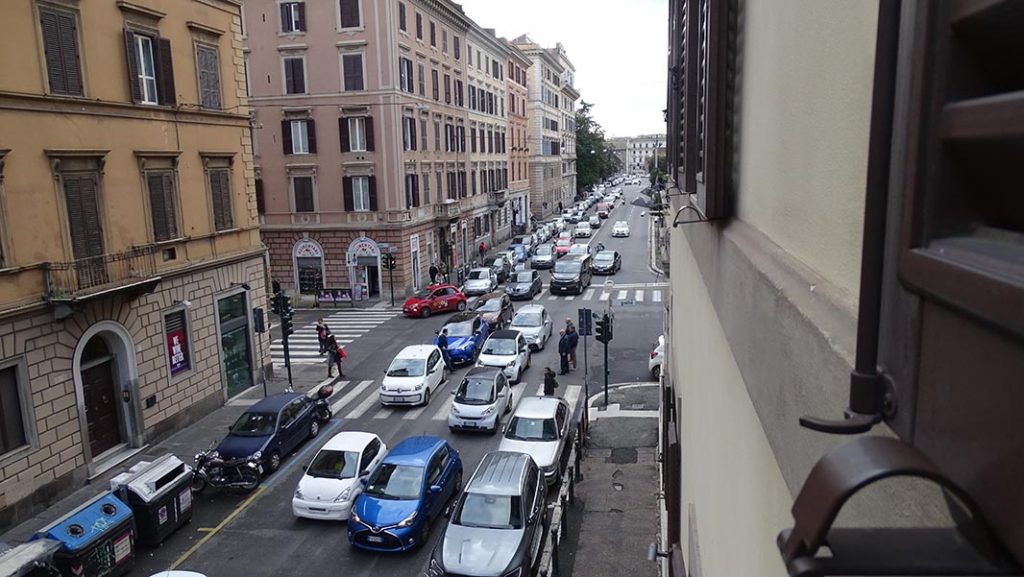
Traffic on the Via Cernaia, looking out from Domus Australia in Rome in December 2019. Image: Monsignor John Boyle/Supplied.
There are four of us living in Domus Australia. Father Luca Infantino, a doctrinal student at the Jesuit Pontifical Biblical Institute, Carlo, another worker, and me. Carlo is a contractor employed here to do odd jobs working around the pilgrimage centre, with the official title “porter”. But he can cook! I am putting on so much weight and, without exercise, I will most likely avoid COVID-19, but die from obesity. Well, as my grandmother, Mama Dubois, used to say, “Why die healthy?”
The Pope’s Vicar of Rome, Cardinal Angelo De Donatis, who himself tested positive for coronavirus on Monday, issued an edict that all the churches in Rome were to close. Some hours later another directive came from the Diocese of Rome, that all churches in Rome were to be closed, but parish churches were to open for parishioners to visit. This directive came personally from the Holy Father. Our parish church, Saint Mary of the Angels and the Martyrs, forms part of the old Diocletian baths, and is the last great architectural project from the genius of Michelangelo. It was commissioned in 1561. Some will know the church. It is opposite Rome’s main railway station with an enormous, and I mean enormous, fountain out the front. One can enter the church from our street, Via Cernaia. The church is only open for prayer. At the other end of our street is the British Embassy, facing another Michelangelo project, the Porta Pia, built between 1561 and 1565. Of interest to Catholics is that it was near this gate, some 300 metres from Domus Australia that on September 20, 1870, Bersaglieri soldiers bombarded the walls of what is now the French Embassy to the Holy See, entered Rome and completed the unification of Italy. Pius IX had lost what was left of the papal states.
For the last three weeks within these churches, there has been no Mass, baptisms, funerals or weddings. Crematoria in the northern part of the country are in operation twenty-four hours a day and even then, the army is moving bodies to less used crematoriums to dispose of them. There will be no public Easter ceremonies. Everything will be done now over the internet. I thought it would be interesting to see the Holy Father performing the Washing of the Feet ceremony in front of television cameras with masked camera operators, before a non-congregation, and sanitising his hands in between feet. Francis, however, has suppressed that part of Holy Thursday. It would have called for twelve new liturgical bowls of water thereby theologically linking water (baptism) with the twelve apostles. I could preach an interesting homily on this juxtaposition.
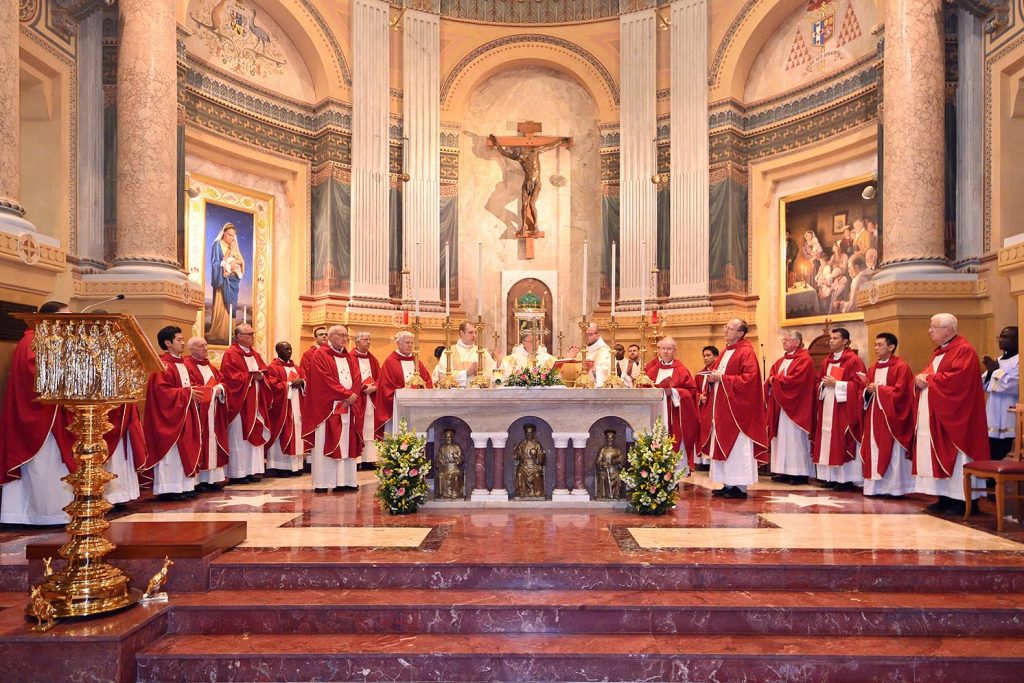
Archbishop Anthony Fisher OP, Archbishop of Sydney, celebrates Mass in the Chapel of Our Lady of the Rosary and St Peter Chanel at Domus Australia, Rome, 26 January 2020. Image: Monsignor John Boyle/Supplied.
We are hermetically sealed off from the outside world with food delivered by carrier, then cooked by Carlo. Carlo cleans my apartment once a week. I have the pearl of great price in my apartment, a washing machine. So I am set. Father Luca and I go down to the Domus Australia restaurant for meals. He is studying for most of the day while I have been reading and watching DVDs, delivered to me by my friends at the nearby British Embassy. With so much time on my hands, I read Lord of the Flies in a day and a half. It is a parable on human’s poor behaviour in a crisis that went on for months (I suggest you don’t read it).
I have watched The Theory of Everything, a movie based on the life of Stephen Hawking, the Barchester Chronicles, (1982), Skyfall, Quantum of Solace and Dr No, the latter released in 1962. By today’s standards, Dr No is so corny, but I loved it. It took me back to my childhood. Everyone is smoking. Bond’s treatment of women and his spontaneous shooting people he does not like, is unacceptable by today’s standards. It was unacceptable in 1962 of course, but Pinewood Studios, following Hollywood, got away with it. Judi Dench’s language in Skyfall leaves something to be desired. While nowhere near the ‘bad language’ in Dash Cams Australia, another favourite of mine, where the limited language of Australians is unbelievable, I am still uncomfortable with my heroes like Dench taking the Lord’s name in vain. Today, however, at the suggestion of Kirsten my niece, I joined the Netflix family at €11.99 a month, only to then read Netflix is cutting streaming quality in Europe.
Having said that all Italy is in lockdown, some of my friends are asking why I am not coming home. The main reason is that it is now impossible to buy a ticket to Sydney. While it is probably possible in theory to get to Fiumicino – Ciampino is closed – where does one go from there? Some weeks ago there was a flight from Munich or Frankfurt to Vietnam, and from there to Sydney. It sounds a bit dodgy. And, if there is a plane available you can’t self-isolate on a plane. Spending fourteen days, or more, in quarantine in Ho Chi Minh City is unappealing to me. I don’t think it is possible to get back to Australia now other than by my chartering a private jet. Perhaps I should investigate crowdfunding for this private jet? I see the valet setup process starts at $149 and Lifetime Plans are available. Cruise ships also have some deals going.
If we keep going here in Rome the way we have for the past weeks, all will be well. But if services fail, like the hot water going off, or the water itself failing, or there is civil unrest with a breakdown in law and order, or I get sick, then I will acknowledge that I have made the wrong choice. The three women fighting over toilet paper in Woolworths at Chullora shows just how thin civility is in our supposed ‘civilised society’. It’s real Lord of the Flies stuff. I would feel uneasy to flee from here now. I think it is my job to stay at Domus Australia for the duration.
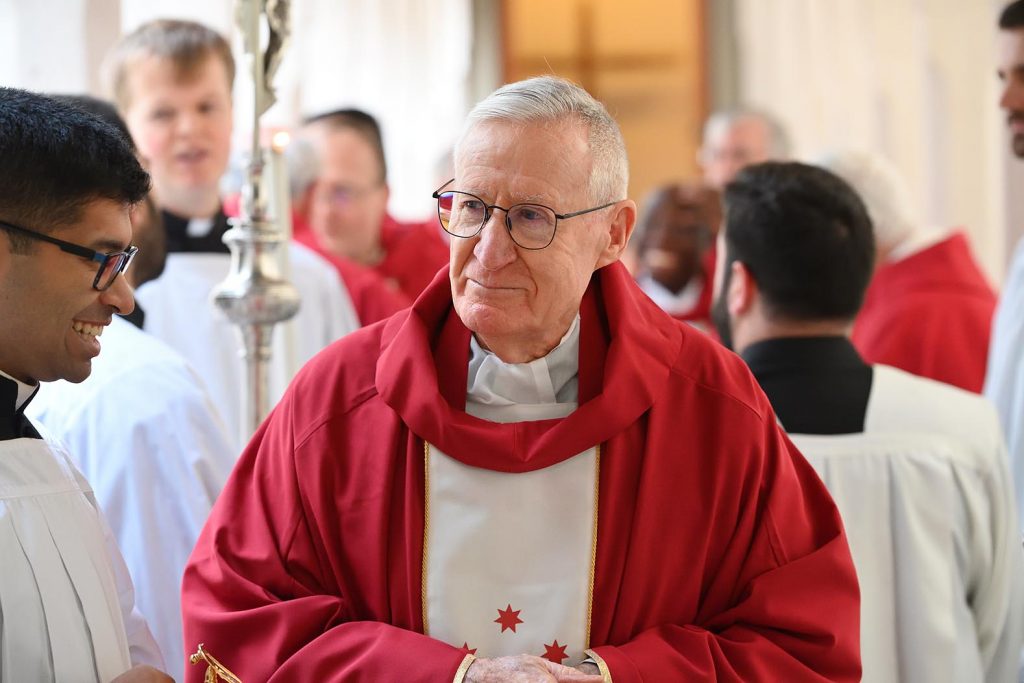
Monsignor John Boyle during Mass celebrated by Archbishop Anthony Fisher OP, Archbishop of Sydney, in the Chapel of Our Lady of the Rosary and St Peter Chanel at Domus Australia, Rome, 26 January 2020. Image: Monsignor John Boyle/Supplied.
And speaking of the coronavirus, which is all anyone talks about here, did you know that the patron saint of pandemics is Saint Corona whose feast day is coming up? I have developed a great devotion St Corona is the last few days.
Wikipedia, my primary source of endless and semi-accurate knowledge, has some interesting facts about St Corona. St. Corona is the patroness of plagues and pandemics, and interestingly enough, gravediggers. Corona, Latin for ‘crown’, is also the name of a second century martyr. St. Corona is considered, well at least since March this year, as one of the patron saints of pandemics.
St Corona is closely associated with St Victor. Together, the two were put to death by Roman soldiers around the year 170 AD.
The dates and locations of their martyrdom are unclear. Most sources say it was in Syria, then under Roman rule. Some say Damascus; others, Antioch. Their feast day is May 14. Most historians agree they died during the reign of Emperor Marcus Aurelius. Victor and Corona were put to death by order of a Roman judge named Sebastian.
The Italian city of Anzu is right smack in the middle of the current coronavirus pandemic. There is a basilica in Anzu where relics of St. Victor and St. Corona have been preserved since the ninth century. There is also a church of St. Corona, (Straße 77, 2880 Wechsel, Austria). According to an article by Reuters, Charlemagne’s Aachen cathedral also has some relics, which will go on show once the coronavirus pandemic has passed. Charlemagne and his palace chapel at Aachen have a connection with us because Charles the Great was crowned “Emperor of the Romans” on Christmas Day 800 in St Peter’s Basilica which is five kilometres from where I am writing this. His palatine chapel was a focus of mine when writing the architectural brief for the present St Patrick’s Cathedral in Parramatta. The floor plan of the palace chapel is a cathedral-in-the-round, and along with San Vitale, Ravenna, is the inspiration for the present St Patrick’s Cathedral.
Corona was a teenager and was in a married relationship. She and her brother-in-law, St. Victor, were martyred. As Roman soldiers gouged out St. Victor’s eyes, she cried out to encourage him not to give up. He kept the faith and boldly proclaimed it. He was martyred, and then they took Corona, and essentially tied her to two bent-over palm trees. They then released the palm trees, ripping her from limb-to-limb. An excruciating death. And, not a pretty story.
Santa Corona, ora pro nobis.





